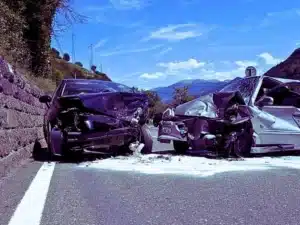Knowing what should you do if you slip and fall in a store may help protect your rights, so you can recover the compensation you need to pay for your medical bills and lost wages. Walking up and down the aisle of a shopping store can be all fun until an accident happens and the confusion begins. Do you angrily blame the store management or yourself? Should you file a formal complaint first or seek medical care?

What Should You Do if You Slip and Fall in a Store?
Store owners and operators have a responsibility to maintain safe environments for their customers and staff. The following steps are what to do if you slip and fall in a store:
1. Seek Medical Care Immediately
After tripping and falling in a store, the first thing you should do is get medical care for the injuries you may have sustained. For instance, you may have cuts, bruises, twisted limbs, or fractured bones. Call an ambulance immediately or ensure you get to the hospital as fast as possible.
Internal injuries and internal bleeding can be fatal. It is important to seek medical help even if you have no visible injuries. Additionally, you will need the doctor’s report and medical bills to prove your injuries.
2. Identify the Reason Why You Slipped and Fell
Find the slip and fall risk factors that put you in your present condition. Many things could make someone fall inside and outside the store. These include:
- Cracks in the parking lot
- Slippery ice on the staircase and walkways
- Wet or slippery floors
- Clutter items left carelessly on the floor
- Pieces of shelving hanging loose
- Uncovered electrical cords
Ensure you immediately note the cause of the slip or fall hazard. It is important to do so since you will need to justify why you fell.
3. Document the Incident
Write down every detail you remember about the incident. Record such things as whether there was enough lighting, the type of item that tripped you, the size of the slippery area, and other details. The human memory tends to erase some things due to the passing of time, and you need to remember all the details, however small.
The details will help decide whether you or the store management were at fault.
4. Take Videos and Pictures of the Area You Fell
Thanks to digital cameras and smartphones, you can now show things as they happened. If you are not hurt too much, get pictures of the area you fell. The pictures will be necessary to support your story later on.
Get video footage of the scene of the incident because it will help depict the conditions under which you fell. For instance, it will capture marks, the gradient of the slippery area, and the condition of other surrounding items.
5. Request Video Footage from the Security Surveillance Cameras
Most stores have security cameras in and around the store. While they are there to deter criminals, they can also be helpful when proving that you fell and incurred injuries at the store because they capture live footage.
It will be helpful to prove the prevailing conditions before and after you fell. Perhaps others have suffered the same fate at the same spot, but the incidences go unreported. It could also show whether the loose electrical cords or other dangerous conditions were there long enough for the store owners to know and make the necessary repairs.
6. Get Contact Information and Addresses of People Who Witnessed the Slip and Fall Accident
Chances are that other people were shopping when you slipped and fell in the store. If they consent, get their contact information, such as cellphone numbers, emails, or addresses. Witnesses can prove valuable because the jury deems their evidence credible if you choose to sue the store.
Bystanders and other people with you might have seen things you didn’t see. Maybe you fell, hit your head on the floor, and entered a coma. Friends or family who were with you at the time can tell what happened.
Furthermore, someone standing nearby may have recorded video footage.
7. File a Formal Complaint with the Store Management
The store must have a method of recording incident reports or formal complaints. Ensure that you follow the store’s procedures, so they don’t use that loophole against you. Only give basic information because the store management will try to get extra details from you to use in their favor.
8. Don’t Give Any Statements
Remain calm when communicating with the store owner or property manager. Avoid posting any details regarding the incident on social media. Additionally, decline to speak with their insurance representative until you communicate with your lawyer.
Also, avoid placing or taking the blame at the scene. The shock from the injury may make you apologize or angrily blame someone next to you. In a claim for damages, however, the store may attempt to use such statements to argue you took responsibility or otherwise avoid compensating you for your losses.
8. Get a Personal Injury Attorney
It would be best if a personal injury attorney took up your case. Stores have teams of experienced lawyers on their side, and they will go to great lengths to defend an injury case. Working with legal representation of your own may help optimize your chances of proving a store’s liability for slip and fall accidents.
What Do I Do if I Slip and Fall in a Store, Can I Sue?
If you wonder what you should do if you slip and fall in a store, you can sue the store management, property owner, or whoever else is liable for the negligence. The premises liability law in Nevada demands compensation for damages if you slip and fall on someone else’s property due to the owner’s negligence.
As long as it is not your fault, you deserve compensation for your associated losses, such as time off work, medical bills, and pain and suffering.
Establishing Liability
You have to establish the party at fault so that you know who to sue. The proof depends on the following types of knowledge:
1. Actual Knowledge
It involves establishing that the property owner or the store management knew about the existing hazard but did nothing to fix it. Actual knowledge is often challenging to prove because you might have been visiting that particular store for the first time when your accident occurred.
2. Constructive Knowledge
This kind of negligence is easier to prove because every business owner is legally responsible for inspecting their premises for any hazards or dangerous areas. The property owner should have the building inspected regularly and have any hazards that they find fixed before they cause any harm.
Who Created the Unsafe Conditions?
If the danger was caused by anything linked with the store, you have the right to sue to recover compensation. For instance, an employee may have made the floor slippery by using a cleaning product with excessive wax to clean the floors. Another example would be a maintenance worker spilling lubricants on the floor when oiling the door hinges.
Did the Store Management Know That the Trip Hazard Existed?
You could sue the store owner if he or she knew the condition existed or who did it and failed to take remedial measures. A perfect example would be when a cleaning fluid accidentally spills on the aisle, but the cleaning staff doesn’t mop up the mess quickly. In such circumstances, you can prove that the store was aware or should have known of the dangerous situation.
Did the Store Management or Employees Have the Chance to Eliminate the Danger?
If the answer to the above question is yes, you can legally sue for damages. However, you must collect and keep the evidence to prove your claim. For instance, you can prove that the spill sat there for hours or even days. The store should have had systems to detect and clean up after product spills.
Please note that clients are responsible for protecting themselves when on other people’s property. You need to provide evidence absolving yourself of blame. The evidence should show that it wouldn’t have been possible to see and avoid the spill under the given circumstances.
The insurance company may shift the blame by blaming the accident on the customer’s carelessness.
Were There Clear Warnings of the Prevailing Dangerous Condition?
Did you see cones, warning signs, notices, or red tape placed around the dangerous area to warn customers of the impending danger? If the answer is yes, it may be more challenging to prove the store was negligent.
However, if the worker failed to put out a sign to warn customers that he or she was cleaning the area, the lack of warning items results in store’s liability for slip and fall accidents.
If an employee causes a slip-and-fall accident, the employer is still liable. You can sue the business owner for the injuries and other damages emanating from the negligence.
Your premises liability lawyer can explain more about your rights and what should you do if you slip and fall in a store.





